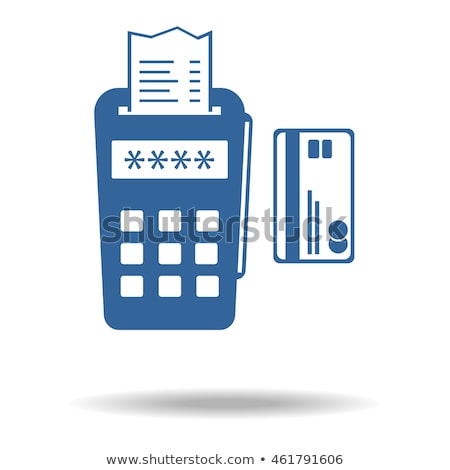Cost of Goods Sold COGS Explained and How to Calculate it 2023
Contents:


Cost of goods accounting equation refers to the direct costs of producing the goods sold by a company. This amount includes the cost of the materials and labor directly used to create the good. It excludes indirect expenses, such as distribution costs and sales force costs. You can find your cost of goods sold on your business income statement. An income statement details your company’s profits or losses over a period of time, and is one of the main financial statements. Cost of goods sold only includes the expenses that go into the production of each product or service you sell (e.g., wood, screws, paint, labor, etc.).
COGS and operating expenses are different sets of expenditures incurred by the business in running their day-to-day operations. To calculate the cost of goods sold, we subtract the ending inventory from the total cost of goods available for sale. The special identification method utilizes the assigned cost of each unit of inventory or goods to calculate the ending inventory and COGS for a particular period. The final inventory will then be counted at the end of an accounting period. The unsold 430 items would remain on the balance sheet as inventory for $1,520.
Importance of COGS in business
And when you know your gross profit, you can calculate your net profit, which is the amount your business earns after subtracting all expenses. Just divide the total cost of goods sold for an accounting period by your total revenue for that same period. However, you can only include the costs of goods you’ve sold in income statements.
Does gross profit include labor and overhead? – Investopedia
Does gross profit include labor and overhead?.
Posted: Sat, 25 Mar 2017 19:43:18 GMT [source]
This software program can organically increase the number of customers loyal to your business. Additionally, it provides actionable insights on how you can maximize profits and helps to enhance customer lifetime value. Operating expenses the expenses that aren’t directly tied to creating the product.
Cost of Goods Sold Examples
Our work has been directly cited by organizations including Entrepreneur, Business Insider, Investopedia, Forbes, CNBC, and many others. We follow strict ethical journalism practices, which includes presenting unbiased information and citing reliable, attributed resources. Finance Strategists is a leading financial literacy non-profit organization priding itself on providing accurate and reliable financial information to millions of readers each year. Find ways to reduce or eliminate waste in your production process. Let us say XYZ Company wants to calculate COGS in the first quarter of 2022.
In standard accounting, costs of sales or costs of goods sold are subtracted from sales to calculate gross margin. These costs are distinguished from operating expenses, because gross profit is gross margin less operating expenses. Cost of sales increases, this may be a sign of growing input costs or improper management of direct expenses. The gross profit is calculated by subtracting the COGS and cost of sales from the total revenue.
What is NOT included in COGS?
Determining how much of each of these components to allocate to particular goods requires either tracking the particular costs or making some allocations of costs. Parts and raw materials are often tracked to particular sets (e.g., batches or production runs) of goods, then allocated to each item. A business that produces or buys goods to sell must keep track of inventories of goods under all accounting and income tax rules.
Here’s how much money Google estimates Microsoft’s cloud business is actually losing – CNBC
Here’s how much money Google estimates Microsoft’s cloud business is actually losing.
Posted: Wed, 21 Dec 2022 08:00:00 GMT [source]
ShipBob’s inventory management software provides ecommerce merchants with visibility into key data and powerful analytics through the ShipBob dashboard. The software automatically tracks key metrics across order fulfillment and shipping, so that merchants can access more accurate information with less effort. Reorder quantity refers to the number of units requested in an inventory replenishment purchase order. Identifying the optimal reorder quantity is crucial, as a business should maintain just enough inventory to prevent stockouts without accidentally overstocking.
Monitor your cost of goods sold to see how efficiently your business uses its labor and materials. If you’re spending too much to create your product, you won’t make enough to turn a net profit. This could mean you need to reduce material costs or improve productivity. Once a business determines why this line item is running over budget, they can make changes to increase profitabilty. Inventory shrinkage occurs when physical inventory levels are lower in reality than what has been recorded. Inventory shrinkage can occur due to issues like shipping damage, theft, or even human error.
However, if the second group is charged to expense, then the cost of goods sold doubles, to $100. Depending on which method is used, the ending inventory balance will change. Because of this issue, several approaches have been developed to derive the cost of goods sold, as outlined below. Costs that are not included in the cost of goods sold are anything related to sales or general administration. These costs include administrative salaries, as well as all utilities, rent, insurance, legal, selling, and other costs related to selling and administration.

Cost of goods sold is the total cost of creating or producing a product or service. It also includes indirect overhead costs, such as labor, cost of management and supervisors, and utility expenses for warehouses, facilities, and equipment. Most commonly, this includes the cost of raw materials, factory overheads, packaging, and direct labor. For a business that makes its own products, it helps to determine how much is spent to develop your finished goods inventory. If you’re not making your own products, it would include the cost of buying products intended for resale. These businesses may want to track all of the direct costs of performing services for customers and break out the cost of sales on their income statement.
Rachel is a Content Marketing Specialist at ShipBob, where she writes blog articles, eGuides, and other resources to help small business owners master their logistics. By correctly determining how much money you spend acquiring or making goods, you empower your business to make better decisions based on that information. Our writing and editorial staff are a team of experts holding advanced financial designations and have written for most major financial media publications.
While COGS are expenses directly related to delivering a service or producing a good, OPEX are those costs necessary to sustain day-to-day operations. Business’s gross income as well, they can do so by subtracting their COGS from their revenue for a certain time period. Both the fixed and varied costs related to creating your product—in this case, shoes—should be included in your COGS. The costs of renting and maintaining the store you’re selling the shoes from, however, are a non-COGS expense. This process helps you forge a deep knowledge of what goes into producing each item you sell or the service you provide.

As revenue increases, more resources are required to produce the goods or service. COGS is often the second line item appearing on the income statement, coming right after sales revenue. Cost of goods sold is the direct cost of producing a good, which includes the cost of the materials and labor used to create the good.
Days payable outstanding is a ratio used to figure out how long it takes a company, on average, to pay its bills and invoices.
- It gives a weighted-average unit cost that is applied to the units available in closing inventory at the end of the period.
- Gross profit is a key profitability figure for a small business.
- Sales Commission – You might have a sales representative who secured the job for you, who you will need to pay a commission.
- You can learn more about the standards we follow in producing accurate, unbiased content in oureditorial policy.
If revenue represents the total sales of a company’s products and services, then COGS is the accumulated cost of creating or acquiring those products. Your cost of goods sold can change throughout the accounting period. COGS depends on changing costs and the inventory methods you use.
